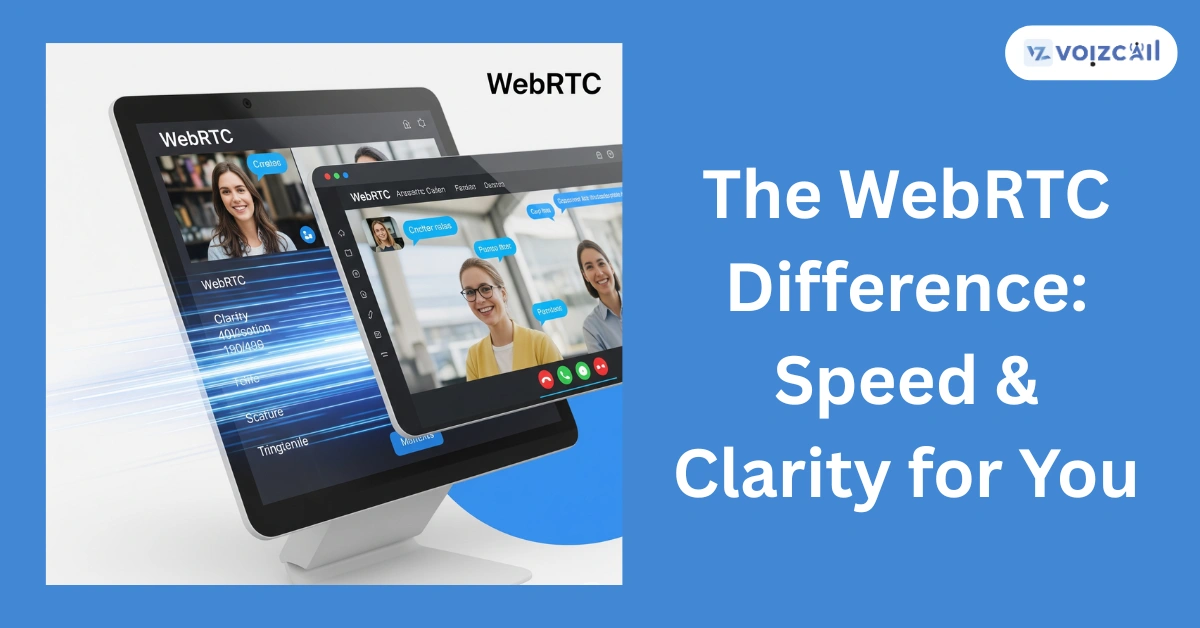


09/Jun/2025
Have you ever taken part in a video call when the sound came slowly, the video kept freezing, or two people seemed to talk at the same time? This situation makes the game even more unpleasant. It’s for these challenges that WebRTC was created. It helps us communicate in real time, so it is smoother, quicker, and more understandable than before.
When you take part in a meeting, chat with people, or assist customers, WebRTC gives you clear video and audio, free of any annoying problems.
We’ll describe how WebRTC is changing the field of voice and video calls in 2025.
What exactly is WebRTC?
The term WebRTC means Web Real-Time Communication. It makes it possible for your browser or app to instantly get audio, video, and data without the need for any extra downloads.
Consider it in the following manner:
You click a link → your browser opens a call → you're live with someone across the world in seconds.
No waiting. No installs. No delays.
WebRTC provides fast and efficient communication when used online.
Low latency is among the main benefits of WebRTC, since it reduces delay in the transfer of messages.
Here are the reasons using this tool is quicker than old-fashioned ones:
It uses peer-to-peer connections, avoiding long server paths.
Built with real-time transport protocols optimized for quick delivery.
No third-party plugin = no extra time wasted loading or syncing.
So when you talk, your voice reaches the other person almost instantly. That’s why WebRTC is faster than other web communication methods.
Call Clarity: WebRTC Audio and Video Quality That Impresses
Tired of choppy calls or unclear video? WebRTC improves call clarity in several ways:
Dynamic bandwidth control: It adjusts quality based on your internet speed—keeping calls stable even on weak connections.
Noise suppression and echo cancellation: Hear only the voice, not the background.
HD video and wideband audio: Great for meetings, webinars, or personal chats.
Whether you're using a phone, tablet, or laptop—WebRTC clarity makes the difference.
Call / Email for Sales Inquiry Today
WebRTC vs. Traditional Communication: What's Better?
|
Feature |
WebRTC |
Traditional VoIP/Web Tools |
|
Installation |
No downloads or plugins |
Often needs app or plugin |
|
Latency |
Extremely low |
Moderate to high |
|
Audio/Video Quality |
Adaptive, high-quality |
Fixed, depends on platform |
|
Device Compatibility |
Works on any modern browser |
Device-specific setups |
|
Start Time |
Instant (1-click join) |
May take longer |
If you're wondering how WebRTC improves call clarity and speed, this table makes it crystal clear.
Why WebRTC Is Perfect for 2025 Communication Needs
The future of communication is real-time, mobile, and seamless. WebRTC checks all the boxes:
Mobile-optimized – Perfect for smartphones, tablets, or web apps.
Cross-platform – No matter the device or OS, it just works.
Great for Video Calls & Conferences – Reliable, clear, and simple to use.
Developers Love It – Easy to integrate into apps and services.
With WebRTC audio and video quality, your business meetings, support calls, or even social conversations feel more real—because they are.
Final Thoughts: Experience the WebRTC Difference Today
In 2025, people don’t have time for laggy, unclear calls. They want crisp video, clean audio, and instant connections. That’s exactly what WebRTC delivers.
Whether you're a business looking to improve customer support or a user who just wants better call quality—WebRTC speed and clarity is the future.
So the next time you're on a call that just works, with zero lag and crystal-clear sound—you’ll know it’s WebRTC doing its magic.